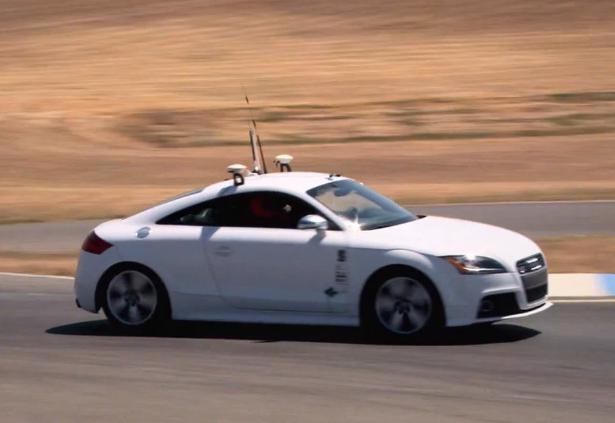 NEWS
NEWS
 NEWS
NEWS
 NEWS
NEWS
![]() Motor racing enthusiasts can breathe easy – human drivers are still able to outmaneuver their robotic counterparts down on the race track.
Motor racing enthusiasts can breathe easy – human drivers are still able to outmaneuver their robotic counterparts down on the race track.
Even so, the gap between professional race drivers and self-driven cars isn’t all that big, as a race at the Thunderhill Raceway in California proved yesterday. Although the human driver achieved victory against the self-driven Audi TTS in a head-to-head, he only managed to shave off a few seconds from the computer’s time.
The BBC reports that the race was part of an ongoing research effort by the Center for Automotive Research at Stanford University (CARS), which designed the robot car. Researchers hope that they’ll ultimately be able to develop cars that can be driven autonomously, with better handling in treacherous conditions.
The robotic car, which researchers have named “Shelley”, has been equipped with dozens of sensors that allows it to figure out everything from its position on the road to how much grip its tires have on the surface. Using the data picked up by its sensors, Shelley is then able to plot the fastest – or safest – route to travel.
Researchers chose the Thunderhill race track for its challenging mix of chicanes, corners and high speed straights, which allow drivers to hit high speeds in excess of 110 mph.
After familiarizing Shelly with the circuit, the car was raced against one of the Thunderhill racing team’s expert drivers, who was equally familiar with the challenges presented by the track. The researchers were delighted to see that Shelly was just seconds behind the human driver over a timed lap – although they were quick to point out that it’s not their intention to replace human race drivers with robots. Instead, they are hoping that their research will lead to the development of new safety features.
Chris Gerdes, head of the CARS team at Stanford, explained why human drivers still have the edge over robotic cars:
“What human drivers do consistently well is feel out the limits of the car and push it just a little bit further and that is where they have an advantage.”
“For instance, in situations where the car is being driven at the limit of the grip of its tires, the car cannot be turned via the steering wheel. Instead, race drivers use the brake and the throttle to force a car round a corner.”
“We’re learning what they are doing and it’s those counter-intuitive behaviors that we are planning to put in the algorithm.”
Here’s a short video of Shelley in action:
Support our mission to keep content open and free by engaging with theCUBE community. Join theCUBE’s Alumni Trust Network, where technology leaders connect, share intelligence and create opportunities.
Founded by tech visionaries John Furrier and Dave Vellante, SiliconANGLE Media has built a dynamic ecosystem of industry-leading digital media brands that reach 15+ million elite tech professionals. Our new proprietary theCUBE AI Video Cloud is breaking ground in audience interaction, leveraging theCUBEai.com neural network to help technology companies make data-driven decisions and stay at the forefront of industry conversations.